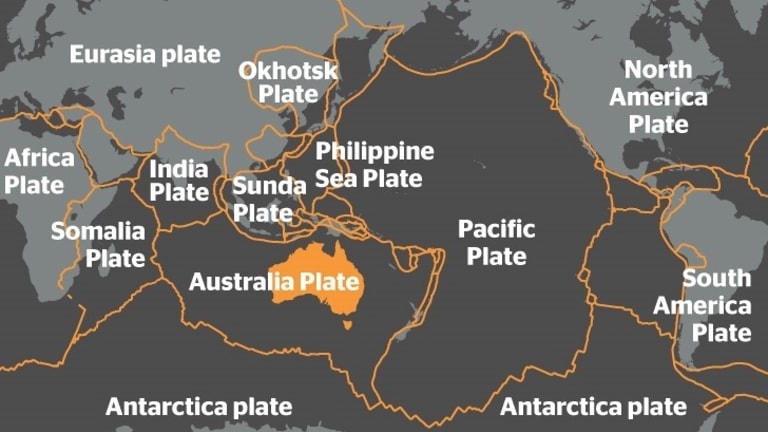
Posted on 10/09/2018 8:58:39 AM PDT by ETL
Scientists have discovered a stunning volcanic ‘lost world’ off the coast of Tasmania.
Experts on the Commonwealth Scientific and Industrial Research Organisation (CSIRO), vessel ‘Investigator’ made the find while mapping the seafloor 249 miles east of Tasmania. The project is led by scientists from the Australian National University. CSIRO is Australia’s national science agency.
A chain of ‘seamounts’, or undersea mountains, were spotted in deep water, offering the first glimpse of a spectacular “underwater world.”
Scientists say that the mountains rise up to 9,843 feet from the seafloor, but the highest peaks are still 6,562 feet beneath the waves.
“Our multibeam mapping has revealed in vibrant detail, for the first time, a chain of volcanic seamounts rising up from an abyssal plain about 5000m [16,404 feet] deep,” said Dr. Tara Martin, from the CSIRO mapping team, in a statement. "The seamounts vary in size and shape, with some having sharp peaks while others have wide flat plateaus, dotted with small conical hills that would have been formed by ancient volcanic activity.”
The area is also teeming with marine life. “While we were over the chain of seamounts, the ship was visited by large numbers of humpback and long-finned pilot whales,” said Dr. Eric Woehler from BirdLife Tasmania, who was onboard the research vessel to study seabirds and marine life. “We estimated that at least 28 individual humpback whales visited us on one day, followed by a pod of 60-80 long-finned pilot whales the next. We also saw large numbers of seabirds in the area including four species of albatross and four species of petrel.”
(Excerpt) Read more at foxnews.com ...
Tectonic plate movement, thousands or millions of years ago?

That would explain a lot. Wonder how many other “lost cities” are underwater and miles deep?
I have a question
The left talks about ocean levels rising due to
melting glaciers.
But doesn’t the ocean floor grow from
active volcanoes all the time?
That does not seem to change the ocean levels.
Seamounts are typically formed from extinct volcanoes that rise abruptly and are usually found rising from the seafloor to 1,000–4,000 m (3,300–13,100 ft) in height.
They are defined by oceanographers as independent features that rise to at least 1,000 m (3,281 ft) above the seafloor, characteristically of conical form.[1]
The peaks are often found hundreds to thousands of meters below the surface, and are therefore considered to be within the deep sea.[2]
During their evolution over geologic time, the largest seamounts may reach the sea surface where wave action erodes the summit to form a flat surface.
After they have subsided and sunk below the sea surface such flat-top seamounts are called “guyots” or “tablemounts”[1]
A total of 9,951 seamounts and 283 guyots, covering a total of 8,796,150 km2 (3,396,210 sq mi) have been mapped[3] but only a few have been studied in detail by scientists.
Seamounts and guyots are most abundant in the North Pacific Ocean, and follow a distinctive evolutionary pattern of eruption, build-up, subsidence and erosion. In recent years, several active seamounts have been observed, for example Loihi in the Hawaiian Islands.
Because of their abundance, seamounts are one of the most common marine ecosystems in the world. Interactions between seamounts and underwater currents, as well as their elevated position in the water, attract plankton, corals, fish, and marine mammals alike.
Their aggregational effect has been noted by the commercial fishing industry, and many seamounts support extensive fisheries. There are ongoing concerns on the negative impact of fishing on seamount ecosystems, and well-documented cases of stock decline, for example with the orange roughy (Hoplostethus atlanticus). 95% of ecological damage is done by bottom trawling, which scrapes whole ecosystems off seamounts.
Because of their large numbers, many seamounts remain to be properly studied, and even mapped. Bathymetry and satellite altimetry are two technologies working to close the gap.
There have been instances where naval vessels have collided with uncharted seamounts; for example, Muirfield Seamount is named after the ship that struck it in 1973.
However, the greatest danger from seamounts are flank collapses; as they get older, extrusions seeping in the seamounts put pressure on their sides, causing landslides that have the potential to generate massive tsunamis.
Plates grow at the spreading centers, but are consumed at subduction zones, where they dive into the earth.
However, in rare cases, such as the Hawaiian Islands, which sit atop a "hot spot", in the middle of a plate (the Pacific Plate), land grows and displaces ocean water. But that amount is minuscule compared to the whole of the ocean.

“The area is also teeming with marine life.”
China will claim historical rights then.
Thanks ETL. Rock around the clock is the geology theme song.
|
Going to have to find a copy.
Disclaimer: Opinions posted on Free Republic are those of the individual posters and do not necessarily represent the opinion of Free Republic or its management. All materials posted herein are protected by copyright law and the exemption for fair use of copyrighted works.